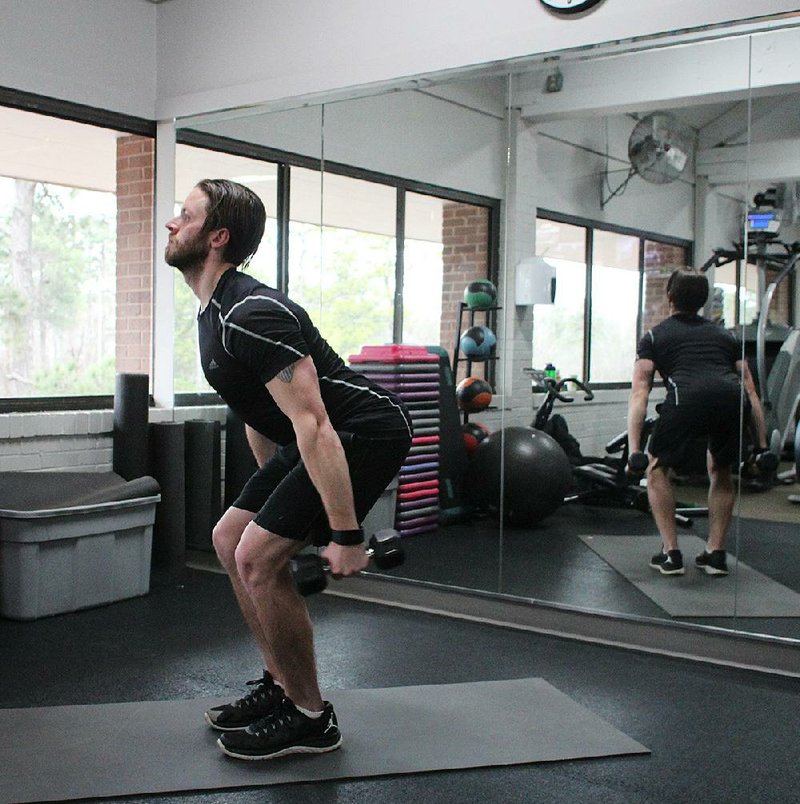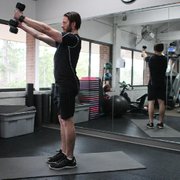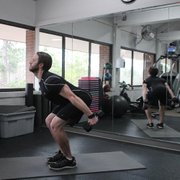Ground reaction force affects us with every step we take throughout the day.
The effects of this impact on the musculoskeletal system should definitely be a consideration in any physical activity program, particularly one for older adults.
This week, I'll shed some light on how ground reaction force can be used to meet one's fitness and wellness goals.
The term "ground reaction force," basically, refers to the forces absorbed by the body as it makes contact with the ground. Each time we step, sit or jump, the body absorbs a certain amount of force that is in direct proportion to the amount of force we aim into the ground.
Bang the ground and your body absorbs a similar bang.
For example, jumping off a park bench onto a concrete surface will generate a certain ground reaction force that is based on your mass, the height of your jump and a few other factors of interest to physics majors. Jumping off of a street curb onto the same surface will result in lesser ground reaction force because the jump is from a lower height.
Generally, the faster your body moves into the ground and the less absorbent the surface is, the higher the ground reaction force will be. This is particularly relevant for people who do a great deal of running or jogging, simply because the repetitive ground reaction forces have a cumulative effect that can degrade the structural integrity of joints over time. The hips, knees and ankles absorb the ground reaction forces that are generated from running and thus, tend to deteriorate.
To minimize the joint deterioration that can occur with repetitive cardiovascular activity, it's important to understand how to reduce ground reaction force.
First, soften the impact. This can be done in various ways, but the easiest is to wear high quality, cushioned shoes and replace them often. Most regular runners change their footwear every six months or more often, depending on their weekly mileage.
Second, reduce stride height. Instead of leaping into the air with each step, try to keep your feet close to the ground. This will lessen the impact that occurs with each step and thus, decrease ground reaction force.
This week's exercise presents another approach for reducing joint deterioration caused by ground reaction force -- increasing the structural integrity of the joint through strength training.
Increasing muscular strength and endurance of the supportive structures will help joints manage impact more effectively over time.
1. Hold a pair of light- or medium-weight dumbbells and stand with your feet just inside shoulder width apart. Squat slightly by bending the hips and knees. You only want to squat down a foot or so.
2. As you do this, lean forward from your shoulders and press your arms back slightly, sort of like a ski jumper does in midair.
3. Quickly return your body to the starting position by extending the hips and knees while moving the dumbbells forward in a short "swing." The dumbbell swing should continue until the arms are straight out in front of each shoulder.
4. Move immediately into the next rep, allowing the arms to swing like pendulums as you perform each rep.
5. Do two sets of 12.
The Skier Swing will help you generate resistance in a way that develops the lower body musculature and strengthens the shoulders and core muscles. It's a great overall movement that should help one manage the joint pressure associated with ground reaction force. Enjoy!
Matt Parrott has a doctorate in education (sport studies) and a master's degree in kinesiology and is certified by the American College of Sports Medicine.
vballtop@aol.com
ActiveStyle on 01/23/2017


